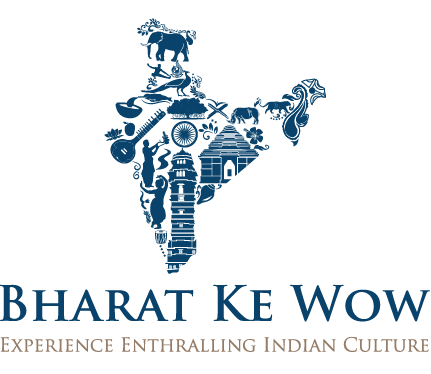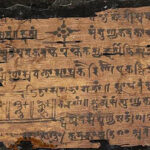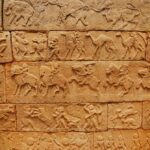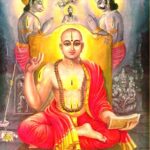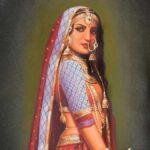Mahanavami Celebrations in Vijayanagara: An Extraordinary Extravaganza
- Vijay Iyer
- October 24, 2023
- 0 Comment
The glory of Vijayanagara and its vibrant Mahanavami celebrations stand as a remarkable chapter in the annals of Indian history. The term “Mahanavami” refers to the ninth day of the Navaratri festival, a time of grandeur and festivity in the Vijayanagara Empire. This article delves into the resplendent Mahanavami celebrations in Vijayanagara, underlining the fusion of spiritual devotion, cultural richness, and military splendor that defined this era.
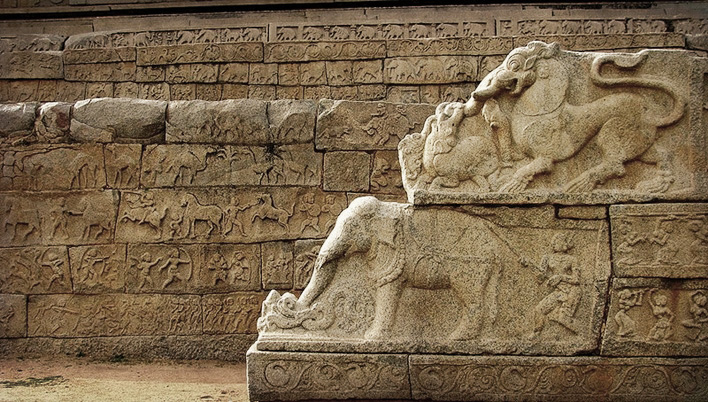
The Empire of Vijayanagara
Vijayanagara, translating to the “City of Victory,” was more than just a capital city; it was the nucleus of a vast and influential empire. Ruled by the illustrious monarch, Krishnadevaraya, the Vijayanagara Empire extended its dominion across the Deccan Plateau and southern India. Established in the 14th century, it emerged as a dominant power on the Indian subcontinent. Known for its astute governance, thriving trade, and flourishing arts and culture, Vijayanagara was a melting pot that attracted traders, scholars, and artists from diverse regions.
The capital city, Vijayanagara, was the crowning jewel of the empire. Its architectural brilliance and grandeur reflected the prosperity and vision of the Vijayanagara rulers. The city itself was a testament to the seamless amalgamation of military prowess and cultural grandeur.
Mahanavami Celebrations: An Intimate Fusion of Cultural and Spiritual Symbolism
Mahanavami, celebrated on the ninth day of the Navaratri festival, was of paramount importance in Vijayanagara. This festival was a harmonious blend of spirituality and culture, with each day bearing specific religious and cultural significance.
The Religious Importance
The first three days of Navaratri were dedicated to Goddess Durga, the embodiment of feminine power and divine energy. The subsequent three days revered Goddess Lakshmi, the deity of wealth and prosperity. The final three days celebrated Goddess Saraswati, representing knowledge and the arts.
The religious aspect of Mahanavami was deeply entrenched in devotion and reverence. Temples, including the magnificent Virupaksha Temple in Hampi, played a pivotal role in conducting elaborate rituals. Priests led intricate ceremonies, and devotees offered prayers and penances.
Cultural Extravaganza
Mahanavami transcended mere religious observance; it transformed into a cultural extravaganza. The nine days brimmed with music, dance, art, and entertainment. Artists and performers from far and wide congregated, creating a vibrant tapestry of creativity and talent.
The Palace Grounds
The epicenter of the Mahanavami celebrations was the regal palace of Vijayanagara. The palace complex was a sprawling architectural marvel, adorned with towering gates and opulent verandahs. This palace symbolized the empire’s might, and its role in the festivities underscored the inseparable connection between power and culture in Vijayanagara.
The open spaces surrounding the palace were transformed into vibrant fairgrounds, meticulously designed to accommodate the throngs that gathered during the festival. Dancing-women, musicians, nobles, and commoners all found their place in this grand spectacle.
The House of Victory
One of the standout features of the Mahanavami celebrations was the House of Victory, a structure erected to commemorate King Krishnadevaraya’s triumphant return from the Orissa campaign. This edifice was more than just a building; it was a symbol of the king’s glory and the empire’s might. The architectural intricacies of the House of Victory showcased the craftsmanship and artistry of the Vijayanagara Empire.
Morning Rituals
Each day of the Mahanavami celebrations commenced with the king’s visit to the idol. This ritual was a solemn act of devotion, signifying the king’s divine connection with the deities. The palace resonated with the cadence of mantras, the fragrance of incense, and the visual spectacle of rituals conducted by Brahmins.
The mornings were a time for spiritual awakening. The city awoke to the chants of prayers and the wafting fragrance of incense. The king’s active participation in these rituals reinforced the profound connection between the ruler and the divine, setting the tone for the day.
The Evening Spectacle
As the sun dipped below the horizon, the festival grounds came alive with the warm glow of torches and flambeaux. The transition from day to night marked a shift from the solemnity of religious rituals to the exuberance of cultural performances.
Plays
Inspired by Indian epics like the Ramayana and Mahabharata, came to life on the stages. These performances served as a source of entertainment and a means of educating the masses about their rich cultural heritage.
The Parade of Wealth
A remarkable feature of the Mahanavami celebrations was the procession of extravagantly adorned women. These women donned jewelry that transcended opulence. Collars, bracelets, anklets, and headpieces adorned their bodies, glistening with gold, diamonds, pearls, emeralds, and other precious stones. The weight of the jewelry was so substantial that some women required assistance to carry it.
These processions were a testament to the empire’s prosperity and the exquisite craftsmanship of its artisans. The jewelry worn during the Mahanavami celebrations showcased a fusion of traditional Indian designs and foreign influences, reflecting the empire’s multicultural identity.
The Grand Review of Troops
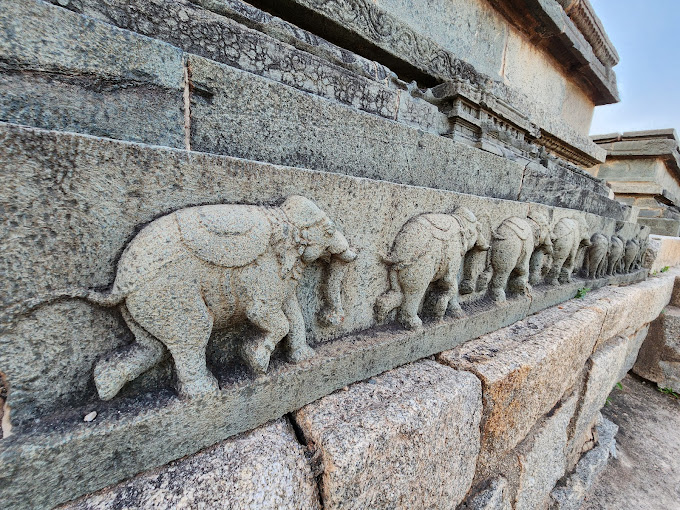
The grandeur of the Mahanavami celebrations extended to the military. The empire’s formidable troops participated in a grand parade, showcasing their martial prowess and regal splendor.
The Cavalry: Often the vanguard of any military campaign, displayed their finely bred horses and impressive riding skills.
The Infantry: Armed with shields and weaponry, represented the backbone of the Vijayanagara military.
The Archers and Musketeers: Added a sense of modernity to the military display.
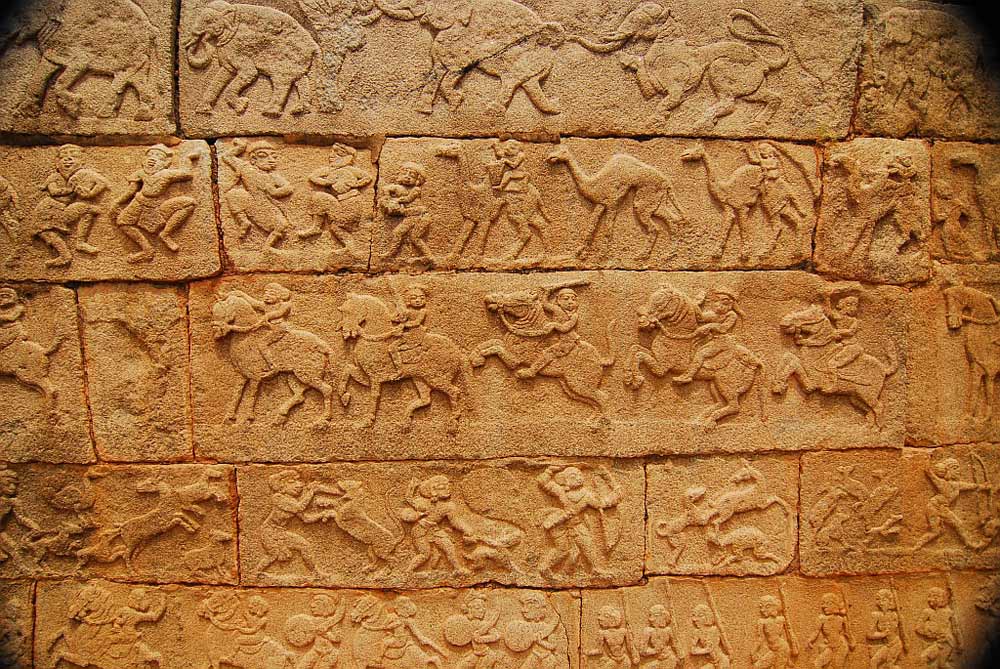
The Return of the King
The Mahanavami celebrations reached their zenith when King Krishnadevaraya returned from the tent of the local deity. His entry was accompanied by the deafening roars of elephants, the spirited neighs of horses, and the triumphant shouts of his soldiers. The entire spectacle was nothing short of breathtaking, leaving an indelible impression on all who witnessed it.
The return of the king was not just a conclusion to the festival; it was a reaffirmation of the monarchy’s authority and a moment of unity for the people. The festival fostered a sense of national identity and loyalty to the crown.
Legacy of Vijayanagara
The grandeur of Vijayanagara and its Mahanavami celebrations is a testament to the empire’s significance in Indian history. The empire’s wealth, culture, and military strength made it a formidable force during its time.
The legacy of Vijayanagara lives on not only in the pages of history but also in the architectural wonders of the city. Visitors to Hampi can still marvel at the ruins of the Virupaksha Temple, the grandeur of the King’s Palace, and the House of Victory. These remnants of the past remind us of a glorious era when a city of victory stood as a beacon of Indian culture.
Conclusion
Domingo Paes’ detailed account of the Navaratri festival at Vijayanagara is a priceless historical document that offers an extraordinary glimpse into the opulence, culture, and grandeur of this once-mighty empire. The Navaratri festivities, celebrated with grandeur and fervor, symbolized the wealth and prosperity of the Vijayanagara Kingdom, a civilization that left an indelible mark on the pages of history. The grandeur of the city, the splendor of the festival, and the might of the military combined to create a kingdom that was truly extraordinary in its time. Vijayanagara, with its rich cultural heritage and architectural wonders, continues to inspire awe and admiration in the modern world.
Read More: Rani Durgavati: Celebrating 500 Years of Courage and Legacy


